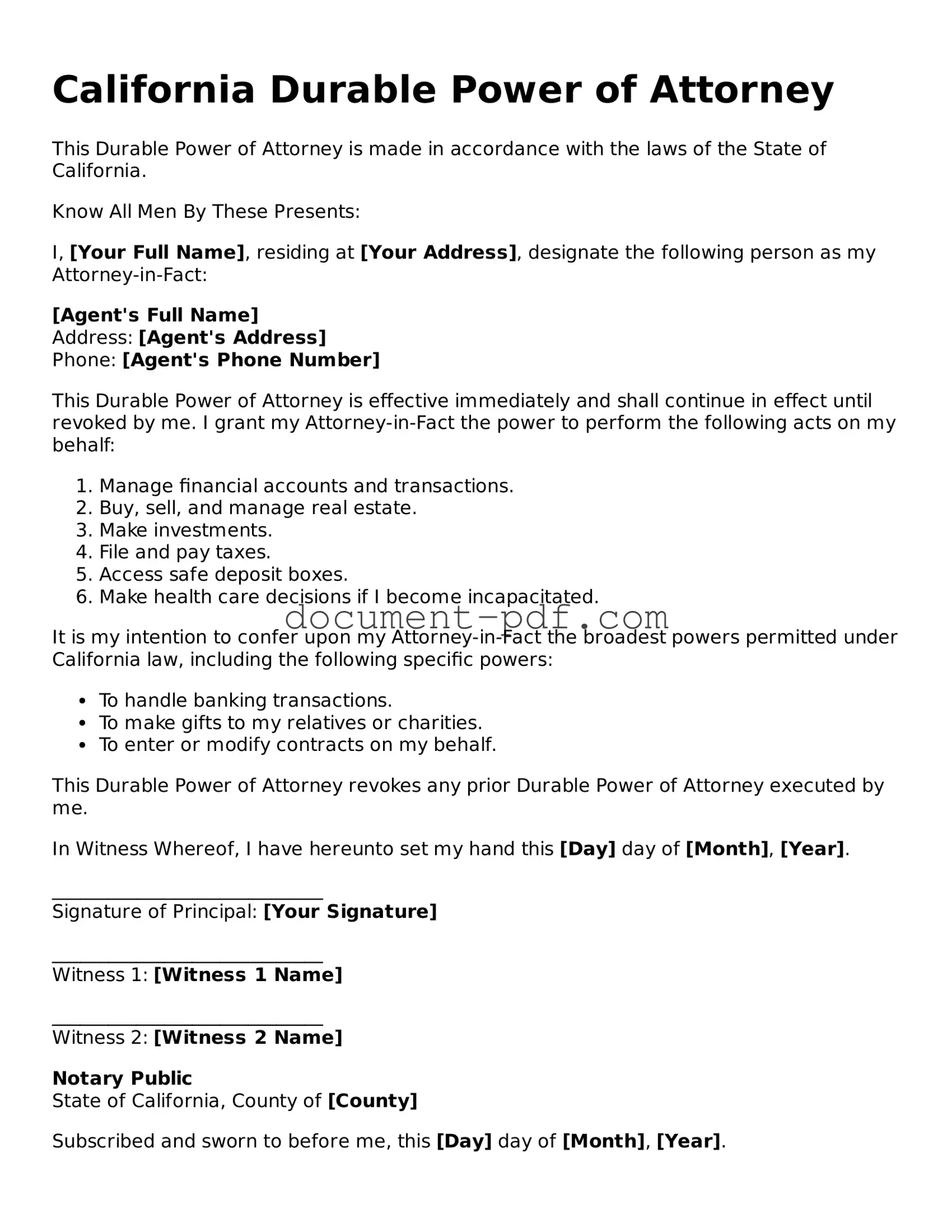California Durable Power of Attorney
This Durable Power of Attorney is made in accordance with the laws of the State of California.
Know All Men By These Presents:
I, [Your Full Name], residing at [Your Address], designate the following person as my Attorney-in-Fact:
[Agent's Full Name]
Address: [Agent's Address]
Phone: [Agent's Phone Number]
This Durable Power of Attorney is effective immediately and shall continue in effect until revoked by me. I grant my Attorney-in-Fact the power to perform the following acts on my behalf:
- Manage financial accounts and transactions.
- Buy, sell, and manage real estate.
- Make investments.
- File and pay taxes.
- Access safe deposit boxes.
- Make health care decisions if I become incapacitated.
It is my intention to confer upon my Attorney-in-Fact the broadest powers permitted under California law, including the following specific powers:
- To handle banking transactions.
- To make gifts to my relatives or charities.
- To enter or modify contracts on my behalf.
This Durable Power of Attorney revokes any prior Durable Power of Attorney executed by me.
In Witness Whereof, I have hereunto set my hand this [Day] day of [Month], [Year].
_____________________________
Signature of Principal: [Your Signature]
_____________________________
Witness 1: [Witness 1 Name]
_____________________________
Witness 2: [Witness 2 Name]
Notary Public
State of California, County of [County]
Subscribed and sworn to before me, this [Day] day of [Month], [Year].
_____________________________
Notary Public Signature
My Commission Expires: [Expiration Date]
